$4450
$3560
The school uniform market size is projected to reach US$ 58.61 billion by 2031 from US$ 38.88 billion in 2024. The market is expected to register a CAGR of 6.1% during 2025–2031.
School Uniform Market Analysis
The global school uniform market is shaped by increasing enrollment, evolving government policies, and the desire for standardized student appearance. Demand is fueled by the expansion of educational institutions and the widespread adoption of uniforms in public and private schools, particularly across Asia Pacific. As cultural and institutional emphasis on discipline and unity persists, manufacturers focus on comfort, inclusivity, and sustainable materials. Digital retail solutions and customization also reshape the purchasing experience, driving further market growth and transformation.
School Uniform Market Overview
The school uniform market continues to evolve in response to changing educational practices and societal priorities. Growth is propelled by the spread of schooling, particularly in regions where uniforms are integral to institutional culture. The adoption of dress codes supports equality and discipline, prompting uniform demand. Meanwhile, manufacturers adapt to shifts in style, comfort, and environmental preferences. Enhanced online shopping options and increased customization further redefine how families and schools engage with uniform providers, supporting ongoing market development.
Customize Research To Suit Your Requirement
We can optimize and tailor the analysis and scope which is unmet through our standard offerings. This flexibility will help you gain the exact information needed for your business planning and decision making.
School Uniform Market: Strategic Insights
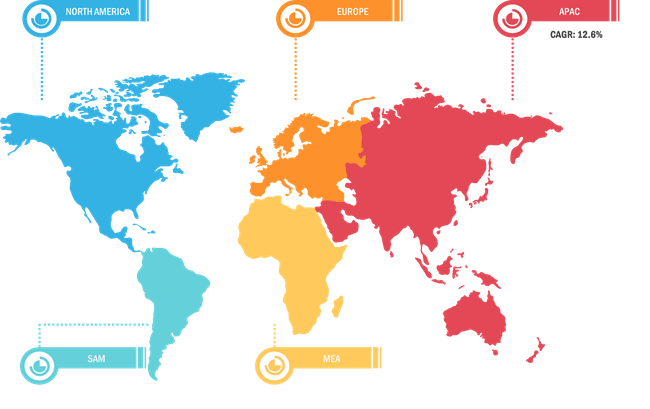
Market Size Value in US$ 38,505.66 million in 2021 Market Size Value by US$ 58,950.69 million by 2028 Growth rate CAGR of 6.3% from 2021 to 2028. Forecast Period 2021-2028 Base Year 2021

Shejal
Have a question?
Shejal will walk you through a 15-minute call to present the report’s content and answer all queries if you have any.
 Speak to Analyst
School Uniform Market Drivers and Opportunities
Speak to Analyst
School Uniform Market Drivers and Opportunities
Customize Research To Suit Your Requirement
We can optimize and tailor the analysis and scope which is unmet through our standard offerings. This flexibility will help you gain the exact information needed for your business planning and decision making.
School Uniform Market: Strategic Insights

| Market Size Value in | US$ 38,505.66 million in 2021 |
| Market Size Value by | US$ 58,950.69 million by 2028 |
| Growth rate | CAGR of 6.3% from 2021 to 2028. |
| Forecast Period | 2021-2028 |
| Base Year | 2021 |

Shejal
Have a question?
Shejal will walk you through a 15-minute call to present the report’s content and answer all queries if you have any.
 Speak to Analyst
Speak to Analyst
Market Drivers:
Strengthening Government Initiatives for Education:
Government initiatives to expand education increase school enrollments and mandate uniforms, directly boosting demand.Growing School Enrollment in Developing Economies:
Growth in the number of schools and student enrollments, particularly in developing countries such as India and China with large populations, expands the uniform market.Accelerating Population Growth in Key Regions:
Rapid population growth across regions such as Asia-Pacific is sustaining consistent demand for school uniforms, especially at the primary and secondary education levels.Rising Disposable Income Among Middle-Class Families:
Increasing income levels in emerging economies enable families to invest in branded and premium-quality uniforms, further driving market growth.Advancing Sustainability and Innovation in Uniform Design
The growing preference for eco-friendly materials and technologically enhanced fabrics—such as those that are durable, comfortable, and stain-resistant—is reshaping consumer expectations and creating new opportunities for manufacturers.
Market Opportunities:
Expanding Presence in Emerging Markets:
Rapid urbanization, rising disposable incomes, and population growth in Asia-Pacific, Africa, and Latin America are increasing school enrollments and driving robust demand for uniforms.Accelerating Growth of E-Commerce and Direct-to-Consumer Channels:
The shift toward online retail and DTC sales channels has dramatically changed the market. Businesses can now reach parents directly with wider selections, easy customization, price transparency, and convenience, breaking the traditional hold of local physical suppliers and enabling new entrants and niche brands to access the market.Advancing Product Innovation and Customization:
Increased consumer demand for customized fits, styles, and school branding provides opportunities for differentiation, supporting premium pricing strategies.Securing Bulk Contracts and Institutional Sales:
Schools and educational bodies increasingly issue long-term contracts, creating opportunities for suppliers to secure stable, high-volume agreements. These institutional deals are especially significant in densely populated regions and for government-mandated uniform programs.Targeting Primary and Secondary Education Segments:
Uniform demand is particularly strong for primary and secondary students, as these segments feature higher enrollment and more widespread uniform mandates compared to universities.
School Uniform Market Report Segmentation Analysis
The school uniform market is divided into different segments to give a clearer view of how it works, its growth potential, and the latest trends. Below is the standard segmentation approach used in most industry reports:
By Product Type:
Topwear:
School uniform garments—such as shirts, blouses, sweaters, and jackets— that are worn on the upper body.Bottomwear:
Uniform items worn on the lower body, including trousers, skirts, shorts, and pinafores.Footwear:
Shoes, sandals, or other types of footwear specifically designed for school use are part of the uniform.Others:
Additional accessories or items associated with school uniforms include ties, belts, socks, hats, or scarves.
By Category:
Boys:
School uniform products are specifically designed, sized, and styled for male students.Girls:
School uniform products are specifically designed, sized, and styled for female students.
By School Type:
- Private Schools
- Public Schools
By Distribution Channel:
- Supermarkets and Hypermarkets
- Specialty Stores
- Online Retail
- Others
By Geography:
- North America
- Europe
- Asia Pacific
- Middle East & Africa
- South & Central America
The school uniform market in Asia Pacific is expected to grow fastest. The school uniform market in Asia Pacific remains vital to the region's schooling experience as educational access expands.
School Uniform Market Report ScopeSchool Uniform Market Share Analysis by Geography
Asia Pacific is expected to grow the fastest in the coming years. Emerging markets in Latin America, the Middle East, and Africa also have many untapped opportunities for school uniform providers to expand.
The school uniform market grows differently in each region due to the growing number of school enrolments, increasing government and private investment in the education sector, and rising disposable income. Below is a summary of market share and trends by region:
1. North America
Market Share:
Fastest-growing region with a rising market share every yearKey Drivers:
- Rising adoption of standardized dress codes
- Emphasis on discipline, equality, and reducing peer pressure among students
- Government support and policies encouraging uniform adoption, especially in urban schools
Trends:
Online retail for school uniforms is growing, offering greater convenience and customization options for schools and parents.
2. Europe
Market Share:
Substantial share due to rising awareness of equality through uniformsKey Drivers:
- Increasing adoption of standardized dress codes in public schools
- Focus on promoting equality, discipline, and school identity through uniform policies
- Government financial support helps low-income families afford uniforms
Trends:
The market is moving toward sustainable fabrics and online customization, with more schools opting for inclusive designs and tailored fits
3. Asia Pacific
Market Share:
Holds a significant portion of the global marketKey Drivers:
- Prevalence of mandatory uniform policies in schools across the region
- Large and growing student population in countries such as India and China.
- Expanding educational infrastructure and government support for public education
Trends:
There is a growing market for affordable yet durable uniforms, eco-friendly materials, and increasing investments in product quality and technological innovation.
4. Middle East and Africa
Market Share:
Growing market with steady progressKey Drivers:
- Growing adoption of uniforms, especially in private and international schools
- Government initiatives and emphasis on sports and extracurricular activities
Trends:
Online retail and specialty stores are becoming more significant, while technological innovations and new product features are important for market expansion
5. South and Central America
Market Share:
Although small, it is growing quicklyKey Drivers:
- Increasing construction and investment in educational institutions
- Rising awareness of the benefits of uniforms in creating a disciplined environment
Trends:
The region is experiencing steady growth in uniform adoption, driven by policy shifts and the expanding private education sector.
School Uniform Market Players Density: Understanding Its Impact on Business Dynamics
High Market Density and Competition
Competition is strong due to the presence of established players such as Dean Clothing Ltd; Gogna Schoolwear and Sports Ltd; Trutex Limited; John Lewis plc; and Elder Manufacturing Company, Inc. Regional and niche providers like The Uniform Company (Asia), Flash Uniforms (Asia Pacific), and Alinta (Asia Pacific) are also adding to the competitive landscape across different regions.
This high level of competition urges companies to stand out by offering:
- Innovation in fabric technology
- Emphasis on comfort and fit
- Increasing demand for sustainability
- Customization and personalization
Opportunities and Strategic Moves
- Building strong partnerships with fabric recyclers, distributors, and other raw material suppliers is becoming essential.
- Companies are exploring backward integration to offer sustainable products.
- Market leaders invest in digital platforms for online ordering, size customization, and inventory management, streamlining logistics and improving the customer experience.
Major Companies operating in the School Uniform Market are:
- French Toast (US)
- Elder Manufacturing Company, Inc. (US)
- Winterbottom's Schoolwear (UK)
- Williamson-Dickie Manufacturing Company (US)
- Trutex Limited (UK)
- John Lewis plc (UK)
- The Uniform Company (India)
- Fraylich School Uniforms (US)
- Flash Uniforms (Australia)
- Alinta (Australia)
- Dean Clothing Ltd (UK)
- Gogna Schoolwear and Sports Ltd (UK)
- Brigade Clothing Ltd (UK)
- Perry Uniform (Uniform Schoolwear Ltd.) (UK)
- Zeco Limited (UK)
Disclaimer: The companies listed above are not ranked in any particular order.
Other companies analysed during the course of research:
- Lyallpur Uniforms (India)
- DUC GIANG CORPORATION DUCARGO (Vietnam)
- Dong Bich Company Limited (Vietnam)
- C Lai World (India)
- Shalgar Hosiery (India)
- Guangzhou Xilei Clothing Co. (China)
- Chasvik Enterprises Pvt Ltd (India)
- Goldtex (Canada)
- All Uniform Wear (US)
- Lands' End (US)
- Kings Sports (India)
- Fabrista Clothing (India)
- Promotion Uniform (India)
- Fa Uniforms (India)
- KNF Uniforms (India)
School Uniform Market News and Recent Developments
Clarks Launches New Schoolwear Collections
In July 2025, the new Clarks-branded school clothing range includes skirts, trousers, shirts, and jumpers designed for children aged four to 11 years old.Target to Hold 2024 Prices on School Supplies as It Kicks Off Back-to-School and College Season
Target Corporation announced it is maintaining its 2024 prices on key back-to-school items, including its popular list of 20 must-have supplies — still adding up to a total of less than US$ 20 — and last year's top-selling US$ 5 backpack. It's part of the retailer's back-to-school and college plan to prioritize value, style, and convenience across school supplies, classroom essentials, dorm décor, and on-trend apparel. The retailer also announced the return of its student and teacher discounts, as well as its guest-loved sales event, Target Circle Week, July 6-12, for additional savings on school supplies, electronics, and more.Schoolblazer launches Trusted Partners programme
Schoolblazer launches its Trusted Partners programme, a new alliance to support young brands improving sports participation. The three brands selected include the Rezon Halos headband, PeBe sports bras, and NIXI Body underwear.Elaghmore acquires stake in Trutex Limited
UK private equity fund Elaghmore has acquired a 42% stake in Trutex Limited ("Trutex"), one of the UK's oldest and well-known quality school wear producers. In addition to acquiring the stake, Elaghmore is investing US$ 3.2 million (£2.5 million) of new equity into the business. At the same time, Trutex has agreed a new US$ 23.6 million (£18.5 million) refinancing facility with AURELIUS Finance Company.Limitless Partners with The Well HQ to Support Female Athletes
Limitless announced that the company is now an Active Partner of The Well HQ. The Well HQ is the UK's leading female athlete experts. The company was founded by Baz, Bella, and Emma - the coach, the GP, and the scientist. Independently, they have worked with women for decades; training athletes, teaching body literacy, and smashing the taboos that block progress. They joined forces in 2018 with a mission to provide women with the knowledge, resources, and support they need to thrive in every aspect of their lives.
School Uniform Market Report Coverage and Deliverables
The "School Uniform Market Size and Forecast (2021–2031)" report provides a detailed analysis of the market covering the following areas:
- School Uniform Market size and forecast at global, regional, and country levels for all the key market segments covered under the scope
- School Uniform Market trends, as well as market dynamics such as drivers, restraints, and key opportunities
- Detailed Porter's Five Forces Analysis and SWOT analysis
- School Uniform Market analysis covering key market trends, global and regional framework, major players, regulations, and recent market developments
- Industry landscape and competition analysis covering market concentration, heat map analysis, prominent players, and recent developments for the School Uniform Market
- Detailed company profiles
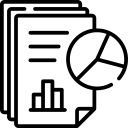
Report Coverage
Revenue forecast, Company Analysis, Industry landscape, Growth factors, and Trends
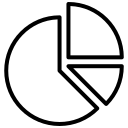
Segment Covered
Product Type, Category, and Distribution Channel
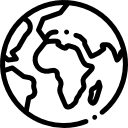
Regional Scope
North America, Europe, Asia Pacific, Middle East & Africa, South & Central America
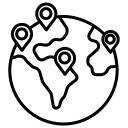
Country Scope
Argentina, Australia, Brazil, Canada, China, France, Germany, India, Italy, Japan, Mexico, Russian Federation, Saudi Arabia, South Africa, South Korea, United Arab Emirates, United Kingdom, United States
Frequently Asked Questions
The market size is projected to reach US$ 58.61 billion by 2031.
Asia Pacific dominated the market in 2024.
Surging preference for e-commerce and online customization is likely to emerge as a key trend in the market in the future.
Increasing government initiatives for improving education sector and burgeoning focus on equality and inclusivity are major factors driving the market.
The List of Companies - School Uniform Market
- French Toast
- Elder Manufacturing Company, Inc
- Winterbottom's Schoolwear
- Williamson-Dickie Manufacturing Company
- Trutex Limited
- John Lewis plc
- The Uniform Company
- Fraylich School Uniforms
- Flash Uniforms
- Alinta
- Dean Clothing Ltd.
- Gogna Schoolwear and Sports Ltd.
- Brigade Clothing Ltd
- Perry Uniform (Uniform Schoolwear Ltd.)
- Zeco Limited
- The Children's Place, Inc.
- Lands' End
- ASOS
- Next Retail Ltd.
- Target Brands, Inc.
- Hennes & Mauritz AB
- Penney IP LLC
- Primark Limited
- David Luke
- Uniqlo
The Insight Partners performs research in 4 major stages: Data Collection & Secondary Research, Primary Research, Data Analysis and Data Triangulation & Final Review.
- Data Collection and Secondary Research:
As a market research and consulting firm operating from a decade, we have published many reports and advised several clients across the globe. First step for any study will start with an assessment of currently available data and insights from existing reports. Further, historical and current market information is collected from Investor Presentations, Annual Reports, SEC Filings, etc., and other information related to company’s performance and market positioning are gathered from Paid Databases (Factiva, Hoovers, and Reuters) and various other publications available in public domain.
Several associations trade associates, technical forums, institutes, societies and organizations are accessed to gain technical as well as market related insights through their publications such as research papers, blogs and press releases related to the studies are referred to get cues about the market. Further, white papers, journals, magazines, and other news articles published in the last 3 years are scrutinized and analyzed to understand the current market trends.
- Primary Research:
The primarily interview analysis comprise of data obtained from industry participants interview and answers to survey questions gathered by in-house primary team.
For primary research, interviews are conducted with industry experts/CEOs/Marketing Managers/Sales Managers/VPs/Subject Matter Experts from both demand and supply side to get a 360-degree view of the market. The primary team conducts several interviews based on the complexity of the markets to understand the various market trends and dynamics which makes research more credible and precise.
A typical research interview fulfils the following functions:
- Provides first-hand information on the market size, market trends, growth trends, competitive landscape, and outlook
- Validates and strengthens in-house secondary research findings
- Develops the analysis team’s expertise and market understanding
Primary research involves email interactions and telephone interviews for each market, category, segment, and sub-segment across geographies. The participants who typically take part in such a process include, but are not limited to:
- Industry participants: VPs, business development managers, market intelligence managers and national sales managers
- Outside experts: Valuation experts, research analysts and key opinion leaders specializing in the electronics and semiconductor industry.
Below is the breakup of our primary respondents by company, designation, and region:

Once we receive the confirmation from primary research sources or primary respondents, we finalize the base year market estimation and forecast the data as per the macroeconomic and microeconomic factors assessed during data collection.
- Data Analysis:
Once data is validated through both secondary as well as primary respondents, we finalize the market estimations by hypothesis formulation and factor analysis at regional and country level.
- 3.1 Macro-Economic Factor Analysis:
We analyse macroeconomic indicators such the gross domestic product (GDP), increase in the demand for goods and services across industries, technological advancement, regional economic growth, governmental policies, the influence of COVID-19, PEST analysis, and other aspects. This analysis aids in setting benchmarks for various nations/regions and approximating market splits. Additionally, the general trend of the aforementioned components aid in determining the market's development possibilities.
- 3.2 Country Level Data:
Various factors that are especially aligned to the country are taken into account to determine the market size for a certain area and country, including the presence of vendors, such as headquarters and offices, the country's GDP, demand patterns, and industry growth. To comprehend the market dynamics for the nation, a number of growth variables, inhibitors, application areas, and current market trends are researched. The aforementioned elements aid in determining the country's overall market's growth potential.
- 3.3 Company Profile:
The “Table of Contents” is formulated by listing and analyzing more than 25 - 30 companies operating in the market ecosystem across geographies. However, we profile only 10 companies as a standard practice in our syndicate reports. These 10 companies comprise leading, emerging, and regional players. Nonetheless, our analysis is not restricted to the 10 listed companies, we also analyze other companies present in the market to develop a holistic view and understand the prevailing trends. The “Company Profiles” section in the report covers key facts, business description, products & services, financial information, SWOT analysis, and key developments. The financial information presented is extracted from the annual reports and official documents of the publicly listed companies. Upon collecting the information for the sections of respective companies, we verify them via various primary sources and then compile the data in respective company profiles. The company level information helps us in deriving the base number as well as in forecasting the market size.
- 3.4 Developing Base Number:
Aggregation of sales statistics (2020-2022) and macro-economic factor, and other secondary and primary research insights are utilized to arrive at base number and related market shares for 2022. The data gaps are identified in this step and relevant market data is analyzed, collected from paid primary interviews or databases. On finalizing the base year market size, forecasts are developed on the basis of macro-economic, industry and market growth factors and company level analysis.
- Data Triangulation and Final Review:
The market findings and base year market size calculations are validated from supply as well as demand side. Demand side validations are based on macro-economic factor analysis and benchmarks for respective regions and countries. In case of supply side validations, revenues of major companies are estimated (in case not available) based on industry benchmark, approximate number of employees, product portfolio, and primary interviews revenues are gathered. Further revenue from target product/service segment is assessed to avoid overshooting of market statistics. In case of heavy deviations between supply and demand side values, all thes steps are repeated to achieve synchronization.
We follow an iterative model, wherein we share our research findings with Subject Matter Experts (SME’s) and Key Opinion Leaders (KOLs) until consensus view of the market is not formulated – this model negates any drastic deviation in the opinions of experts. Only validated and universally acceptable research findings are quoted in our reports.
We have important check points that we use to validate our research findings – which we call – data triangulation, where we validate the information, we generate from secondary sources with primary interviews and then we re-validate with our internal data bases and Subject matter experts. This comprehensive model enables us to deliver high quality, reliable data in shortest possible time.
Trends and growth analysis reports related to School Uniform Market

Aug 2025
Artificial Botanicals Market
Size and Forecast (2021 - 2031), Global and Regional Share, Trend, and Growth Opportunity Analysis Report Coverage: By Type (Artificial Flowers [Rose, Marigold, Sunflower, Tulip, Gerbera, Mixed, and Other Artificial Flowers], Artificial Trees [Ficus Tree, Palm Tree, Bonsai Tree, Bamboo Tree, and Other Artificial Trees], Succulents and Cactus, and Others), Product Type (Stems, Bush, Premade Flowers or Greenery, Cut Flowers, and Others), Material (Polyester, Paper, Nylon, and Others), Distribution Channel (Supermarkets and Hypermarkets, Specialty Stores, Online Retail, and Others), and Geography

Aug 2025
Hospitality Personal Care Products Market
Size and Forecast (2021 - 2031), Global and Regional Share, Trend, and Growth Opportunity Analysis Report Coverage: By Product Type (Creams and Lotions, Shampoos and Conditioners, Soap Bars and Shower Gels, Handwash, Shower Caps, Oral Care Products, Sewing Kits, Dispensers, and Others) and Application (Hotels and Motels, Resorts and Spas, and Hammams)

Aug 2025
Hospitality Textile Products Market
Size and Forecast (2021 - 2031), Global and Regional Share, Trend, and Growth Opportunity Analysis Report Coverage: By Product Type (Bed Sheet [Flat Sheets, Fitted Sheets, Decorative Top Sheets, and Baby Crib Sheets], Pillowcases and Protectors, Duvet Covers, Bathroom Textiles [Bath and Pool Towels, Hand Towels, Bathmats and Rugs, and Bathrobes] Blankets Duvets and Comforters [Synthetic and Natural Fill], Pillows, Mattress Pads and Encasements, Kitchen Towels, and Tablecloths), and Application (Hotels and Motels, Resorts, and Spas and Hammams)

Aug 2025
Household Fans Market
Size and Forecast (2021 - 2031), Global and Regional Share, Trend, and Growth Opportunity Analysis Report Coverage: By Product Type (Ceiling Fan, Pedestal Fan, Table Fan, Exhaust Fan, Wall Fan, and Others), Distribution Channel (Supermarkets and Hypermarkets, Specialty Stores, Online Retail, and Others), and Geography

Aug 2025
Nutraceuticals Market
Size and Forecast (2021 - 2031), Global and Regional Share, Trend, and Growth Opportunity Analysis Report Coverage: By Type [Functional Foods, Functional Beverages, and Dietary Supplements [General Wellness, Sports Nutrition, Weight Management, Immune Health, and Others)], Distribution Channel (Supermarkets and Hypermarkets, Specialty Stores, Online Retail, Convenience Stores, and Others), and Geography

Aug 2025
Nicotine Pouches Market
Size and Forecasts (2020 - 2030), Global and Regional Share, Trend, and Growth Opportunity Analysis By Strength (Less than 6 mg/g, 6 mg/g to 12 mg/g, and More than 12 mg/g), Flavor [Original/Plain, and Flavored (Mint, Berry, Citrus, Fruity, Others)], Distribution Channel (Supermarkets and Hypermarkets, Convenience Stores, Online Retail, and Others)